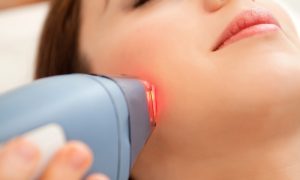Ensuring that your eye lenses fit properly is not only essential for comfort but also critical for maintaining eye health and achieving optimal vision. Whether you’re wearing eyeglasses or contact lenses, the proper fit plays a key role in enhancing clarity, comfort, and protection for your eyes. Ill-fitting lenses can lead to discomfort, headaches, blurred vision, and even long-term damage to your eyes. This article will explore various steps you can take to ensure your eye lenses fit as they should, keeping your eyes safe and your vision at its best.
1. Understanding Your Prescription
Before considering the fit of your lenses, it is important to start with an accurate prescription. A poorly prescribed lens will never fit properly or deliver the desired results. An eye examination by an optometrist or ophthalmologist is the first step. During the exam, various tests are conducted to determine not just the strength of your prescription but also to check for any underlying eye conditions.
Why It Matters
The prescription dictates the specific shape and curvature of the lens, which directly influences how the lenses fit the eye. Incorrect measurements or out-of-date prescriptions can lead to discomfort or a lack of sharpness in vision. Always ensure that your prescription is up to date, as your vision can change over time, particularly with age.
2. Choosing the Right Frame for Eyeglasses
If you’re opting for eyeglasses, the frame you choose is just as important as the lenses. An ill-fitting frame can cause the lenses to sit in an improper position, affecting both comfort and functionality.
Frame Size
Eyeglass frames come in various sizes, and it’s essential to select a frame that matches the proportions of your face. A frame that is too wide may slide off, while a frame that is too narrow can put unnecessary pressure on the sides of your head and nose.
- Tip: When trying on glasses, ensure the temples (the arms of the glasses) fit comfortably around your ears, and that the bridge of the frame sits snugly on your nose without causing any irritation. Your eyes should be positioned directly in the center of the lenses to prevent distortion.
Material Choice
The material of the frame can also impact the fit. Lightweight materials like titanium or acetate can offer both comfort and durability. Choose a frame material that will conform well to the shape of your face and provide lasting comfort throughout the day.
Adjustability
Certain frames are more adjustable than others. Frames with adjustable nose pads, for example, allow you to tweak the fit for a more comfortable experience. Opting for adjustable frames can help ensure that the glasses stay in place and don’t shift while you go about your daily activities.
3. Proper Contact Lens Fit
Contact lenses, unlike eyeglasses, rest directly on the surface of your eye, making the fit even more critical for comfort and eye health. An ill-fitting contact lens can lead to irritation, dryness, or even more serious complications, such as corneal damage.
The Right Contact Lens Size
Contact lenses come in various sizes and curvatures, and choosing the correct size based on your eye shape is crucial. An eye care professional will measure the curvature of your cornea and the diameter of your eye to ensure the right fit. A lens that is too tight may cause discomfort and affect blood flow to the cornea, while a lens that is too loose can shift around too much, causing blurry vision.
- Tip: During your fitting appointment, your eye care provider will usually test a contact lens to see how it fits on your eye. They will ask for feedback on how it feels and make any necessary adjustments.
Material and Design
Contacts are made from different materials, such as hydrogel or silicone hydrogel, and each type offers different levels of oxygen permeability. Oxygen flow is vital for keeping the cornea healthy, so choosing a contact lens with a material that allows adequate oxygen transmission is essential.
- Tip: If you have dry eyes or tend to wear your lenses for extended periods, discuss options for lenses with better moisture retention or breathable materials.
Assessing Comfort
The initial fit of your contact lenses should be checked thoroughly to ensure they feel comfortable when worn for extended periods. If your lenses feel gritty, dry, or cause any discomfort, it’s essential to address the issue right away. Continuing to wear poorly fitting lenses can lead to corneal abrasions or other serious conditions.
4. Routine Check-Ups and Adjustments
Even after your lenses are properly fitted, regular check-ups are crucial to ensure that they continue to serve their purpose. Whether you wear eyeglasses or contact lenses, it’s essential to see your eye care professional regularly to make sure the lenses are still fitting well and providing optimal vision.
Annual Eye Exams
Even if you’re not experiencing noticeable discomfort, it’s wise to have an annual eye exam. Vision can change over time, and an updated prescription can help keep your lenses working effectively. For contact lens wearers, it’s important to ensure that your lenses are still suitable for your eye shape and overall health.
Lens Adjustments
For glasses, the frames can sometimes become loose or bent out of shape with regular use. If this happens, your optician can make necessary adjustments to ensure a comfortable fit. For contact lens wearers, check for signs of dryness, redness, or irritation, which could indicate that the lenses no longer fit properly.
5. Hygiene and Maintenance for Comfort
Maintaining proper hygiene is not only important for the longevity of your lenses but also for ensuring comfort and eye health. For eyeglasses, regularly cleaning the lenses and adjusting the frames will ensure optimal vision and comfort. For contact lenses, cleaning and disinfecting them every day is crucial.
Contact Lens Care
If you wear contact lenses, cleaning them after each use prevents the build-up of dirt, bacteria, and oils that can cause irritation. Additionally, always wash your hands before handling your lenses and replace your contact lens case every few months to prevent contamination.
- Tip: Never wear contact lenses past their prescribed expiration date. Overworn lenses can contribute to dryness and eye infections.
Eyeglass Lens Maintenance
For glasses, use a microfiber cloth to clean the lenses and avoid abrasive materials that can scratch the surface. Regularly tighten any loose screws in the frames to ensure they fit properly and remain secure throughout the day.
6. Signs That Your Lenses Aren’t Fitting Properly
Despite your best efforts, it’s possible for lenses to fit improperly. Here are some signs that your lenses may need adjustment:
- Discomfort: If your lenses cause pain, itching, or a sensation of dryness, they may not be the right fit.
- Blurred Vision: If your lenses cause distortion or blur your vision even with an updated prescription, it’s time to see your eye care professional.
- Frequent Adjustments: If you find yourself constantly pushing your glasses up or adjusting your contact lenses, the fit may be off.
7. Conclusion
A proper lens fit is key to experiencing clear vision, comfort, and maintaining eye health. Whether you’re wearing eyeglasses or contact lenses, taking the necessary steps to ensure proper fit and regular maintenance will ensure that your vision remains sharp and your eyes stay healthy. Regular visits to your eye care professional for check-ups and adjustments will ensure that your lenses continue to provide optimal support, whether for refractive issues or specific eye conditions. Always prioritize comfort, and don’t hesitate to seek professional advice when needed. Your eyes deserve the best, and with the right lens fit, you can enjoy clear vision and comfort every day.















